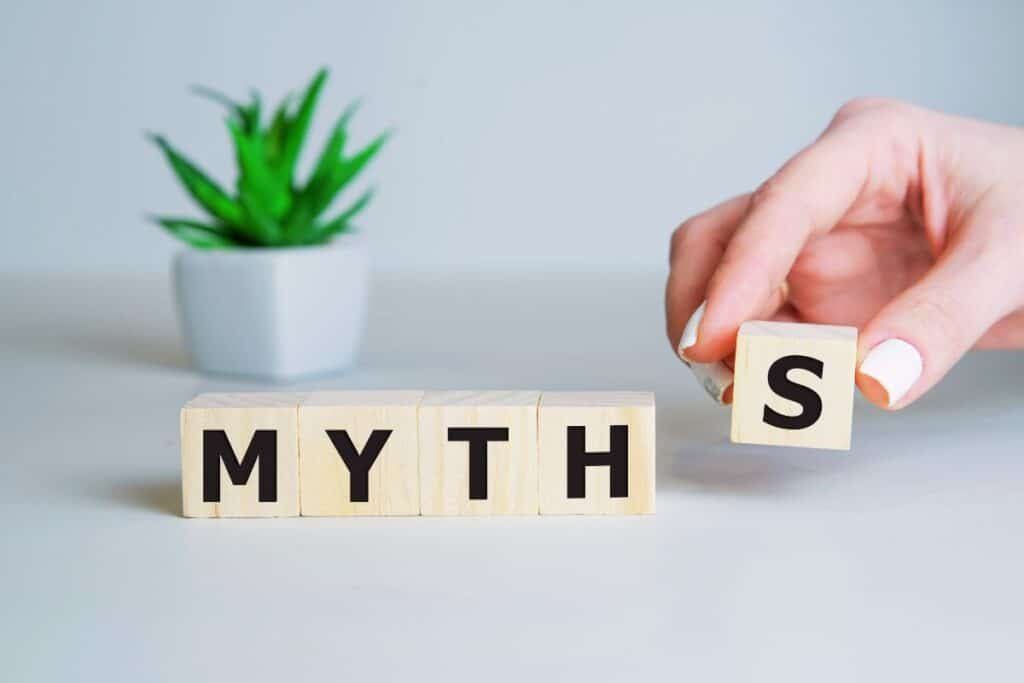If you want the short answer to this question, then it’s a simple ‘no’ – children and teens can’t spot the signs of child grooming.
If adults, with all of their worldly wisdom and experience, can’t spot the signs of grooming, then how can children and teens who have less experience of the world?
Ok, that’s a sweeping statement; you have some 10-year-olds who have had more life experiences than some 50-year-olds.
But the point remains that if someone with decades of experience in life, training, education, and worldly insights can’t spot grooming, then it’s unreasonable to expect anyone under the age of 18 to spot the signs of grooming either.
In this post, we will discuss what child grooming is, who children are most likely to tell if they’re worried about grooming behaviours, and why as a society, we need to stop assuming that children can spot the signs of grooming.
What is Child Grooming?
Child grooming is the manipulative process where a perpetrator builds trust with a child in order to abuse them, most often sexually.
Both online grooming and grooming that happens offline often appears as normal behaviour, which is why it frequently goes unnoticed.
Finding an exact definition for grooming is challenging. This is because there is no universal definition for what grooming is.
However, a good definition from the Metropolitan Police defines grooming as:
‘Grooming is when a person builds a relationship with a child, young person or an adult who’s at risk so they can abuse them and manipulate them into doing things. The abuse is usually sexual or financial, but it can also include other illegal acts. Grooming can take place online or in person and it can happen over a short or long period – from days to years.’
This definition reinforces the point that anyone can be groomed and that grooming can take place both online and in the real world.
It also reminds us that grooming can be a slow process. This is what makes groomers particularly manipulative. Their actions are often disguised as acts of friendship and care and are therefore likely to go unnoticed to most people.
The problem with having a variety of definitions for what grooming is means that we don’t really know what we’re warning children and teenagers about.
After all, if adults can’t agree on a universal definition of what grooming is, how do we know what to teach children to look out for and protect themselves against?
Who Grooms Children?
Groomers can be a wide range of individuals and in reality, can be anybody.
However, individuals who groom children tend to have the following characteristics:
- Be a trusted adult
- Known to the child
- Described as ‘charming,’ ‘helpful,’ ‘upstanding’
- Go out of their way to uphold their ‘good’ reputation
- Be one of the last people you would expect to groom children
Grooming Red Flags
The red flags or warning signs associated with child grooming are rarely obvious and can vary between groomers and their victims.
However, common red flags include a child:
- Being secretive about who they are talking to
- Having friendships with a much older person
- Withdrawing from social activities/friends/school work
- Spending excessive time on electronic devices (such as a smartphone or tablet)
- Receiving gifts, even if they are small and something the child could afford themselves
- Spending less time with their family and friends
Why Can’t Children Spot the Signs of Grooming?
Studies have shown that children (including teens) are not brilliant at detecting grooming behaviours, even when they are presented with acts of grooming in the form of a fictionalised story.
And why should children be aware of these warning signs?
Adults struggle to spot the signs of grooming, so why should we expect children to?
- Grooming is hard for children and teens to spot because the acts of grooming imitate normal adult-to-child interactions.
- Children were more likely to see strangers as potentially dangerous but not people known to them.
- Children under 11 years old are less likely to be concerned about a groomer if they hold a position of trust, and that position is also trusted by parents.
- Children are more likely to report concerns about grooming behaviours to a member of staff at school than to their parents.
- Only 14-24% of children aged 6-11 years old would report suspicions of grooming behaviours that worried them.
Why Strangers Aren’t the Biggest Threat
Let’s consider the point of children seeing strangers as more of a danger than people known to them.
This makes sense since we bring children up with the concept of ‘stranger danger.’
But we also encourage children to speak to strangers in shops (‘Say thank you to the lady!’) and with other children (‘Go and play with those children over there.’)
It’s conflicting advice.
No wonder children don’t spot the warning signs.
However, this reluctance to see anyone but strangers as a potential threat is concerning when we know that sexual offences caused by strangers make up less than 20% of all sexual offences and around 10% of rapes are caused by strangers.
If you need this information clearer, you are more likely to experience sexual violence from someone you know than from a stranger.
But don’t misconstrue what I’m saying here. I’m not saying that we need to make children be on high alert to every adult in their lives in case they are a sex offender, but we do need to be realistic that strangers don’t necessarily pose as big a threat to children as society makes out.
Who Do Children Share Their Concerns About Grooming With?
Interestingly, of the children in the study previously mentioned, 80% said that if they saw grooming behaviours happening, they would tell a member of the school staffing team.
This reporting rate was reduced to 71% of children if grooming behaviours they recognised were happening to them.
Only 8% and 11%, respectively, would tell a parent.
This is interesting because it tells us three things about children reporting concerns about grooming behaviours:
- Children and teens are more likely to report concerns they have about others being the victim of grooming rather than themselves being the victim.
- More children will report concerns that they are being groomed to their parents than if they think someone else is being groomed.
- The very vast majority of children will report suspicions of grooming activity to someone who works in their school, be it their teacher, a teaching assistant, or any other member of staff.
This shows us how important teacher-pupil relationships are for enabling children to divulge concerns about sexual violence.
This statistic also emphasises the teacher role in safeguarding and the need for teachers to keep records and share concerns to protect children from groomers being able to get far enough along the grooming process to commit an act of sexual violence towards the child.
How Many Children Share Concerns About Grooming?
The next point we need to consider is the statistic that only 14-24% of 6-11-year-olds would report grooming behaviours that concerned them.
At this point, you might be thinking, yes, but these are children under 11 years old.
Surely older teens would spot the signs of grooming versus children?
And I’m sorry to say that you’d be wrong.
In a separate study of 548 participants aged under 17 years old, researchers found that there was no significant difference between a child or a teenager being able to identify a sexual abuser and grooming behaviours.
In short, the large majority of under-18s cannot identify grooming behaviours.
If these children and teens aren’t able to identify these behaviours, then how can they be worried by them, let alone worried enough to report them?
Summary
With all this in mind, it seems obvious to conclude that children, including teenagers, are unlikely to spot the signs of grooming used by adults who may go on to commit acts of sexual violence against them.
This is largely because the manipulative nature of grooming means it often blends in with everyday adult-child interactions and are likely to be carried out by people who the child has learned to trust.
As children and teens don’t see anything to be worried about with the behaviours being presented to them, they don’t see the need to report anything.
After all, why would you report something that appears normal and not suspicious to you?
For now, I’ll leave you with this notion that children and teens do not associate groomers and those who go on to commit acts of sexual violence to be the same people who are in positions of authority and are painted as society to be people who can be trusted.
What are the early signs of child grooming?
Grooming often starts with excessive attention, gifts, secrets, or emotional manipulation disguised as friendship or care. However, this is not always obvious. Gifts can be small and subtle and aren’t necessarily expensive.
Can teenagers recognise when they are being groomed?
Research shows that teenagers, just like younger children, struggle to identify grooming because it often mirrors normal adult behaviour.
Who do children usually tell about grooming concerns?
Most children report suspicions to school staff rather than parents. Teacher-child trust plays a vital role in disclosure.
Why is grooming so hard to detect?
Grooming is designed to look normal and harmless. Perpetrators build trust slowly, often taking months or years, which hides their true intent.
This post is adapted from a section of It's All Your Fault - due for release in 2025.



